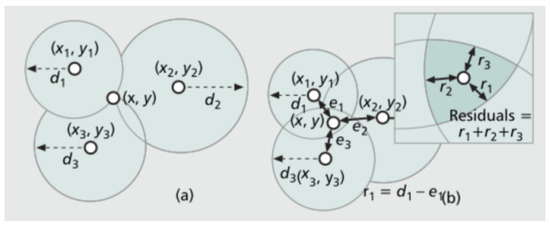
Sensors, Vol. 23, Pages 1816: Pedestrian Augmented Reality Navigator
Sensors, Vol. 23, Pages 1816: Pedestrian Augmented Reality Navigator
Sensors doi: 10.3390/s23041816
Authors:
Tanmaya Mahapatra
Nikolaos Tsiamitros
Anton Moritz Rohr
Kailashnath K
Georgios Pipelidis
Navigation is often regarded as one of the most-exciting use cases for Augmented Reality (AR). Current AR Head-Mounted Displays (HMDs) are rather bulky and cumbersome to use and, therefore, do not offer a satisfactory user experience for the mass market yet. However, the latest-generation smartphones offer AR capabilities out of the box, with sometimes even pre-installed apps. Apple’s framework ARKit is available on iOS devices, free to use for developers. Android similarly features a counterpart, ARCore. Both systems work well for small spatially confined applications, but lack global positional awareness. This is a direct result of one limitation in current mobile technology. Global Navigation Satellite Systems (GNSSs) are relatively inaccurate and often cannot work indoors due to the restriction of the signal to penetrate through solid objects, such as walls. In this paper, we present the Pedestrian Augmented Reality Navigator (PAReNt) iOS app as a solution to this problem. The app implements a data fusion technique to increase accuracy in global positioning and showcases AR navigation as one use case for the improved data. ARKit provides data about the smartphone’s motion, which is fused with GNSS data and a Bluetooth indoor positioning system via a Kalman Filter (KF). Four different KFs with different underlying models have been implemented and independently evaluated to find the best filter. The evaluation measures the app’s accuracy against a ground truth under controlled circumstances. Two main testing methods were introduced and applied to determine which KF works best. Depending on the evaluation method, this novel approach improved the accuracy by 57% (when GPS and AR were used) or 32% (when Bluetooth and AR were used) over the raw sensor data.
This content was originally published here.


